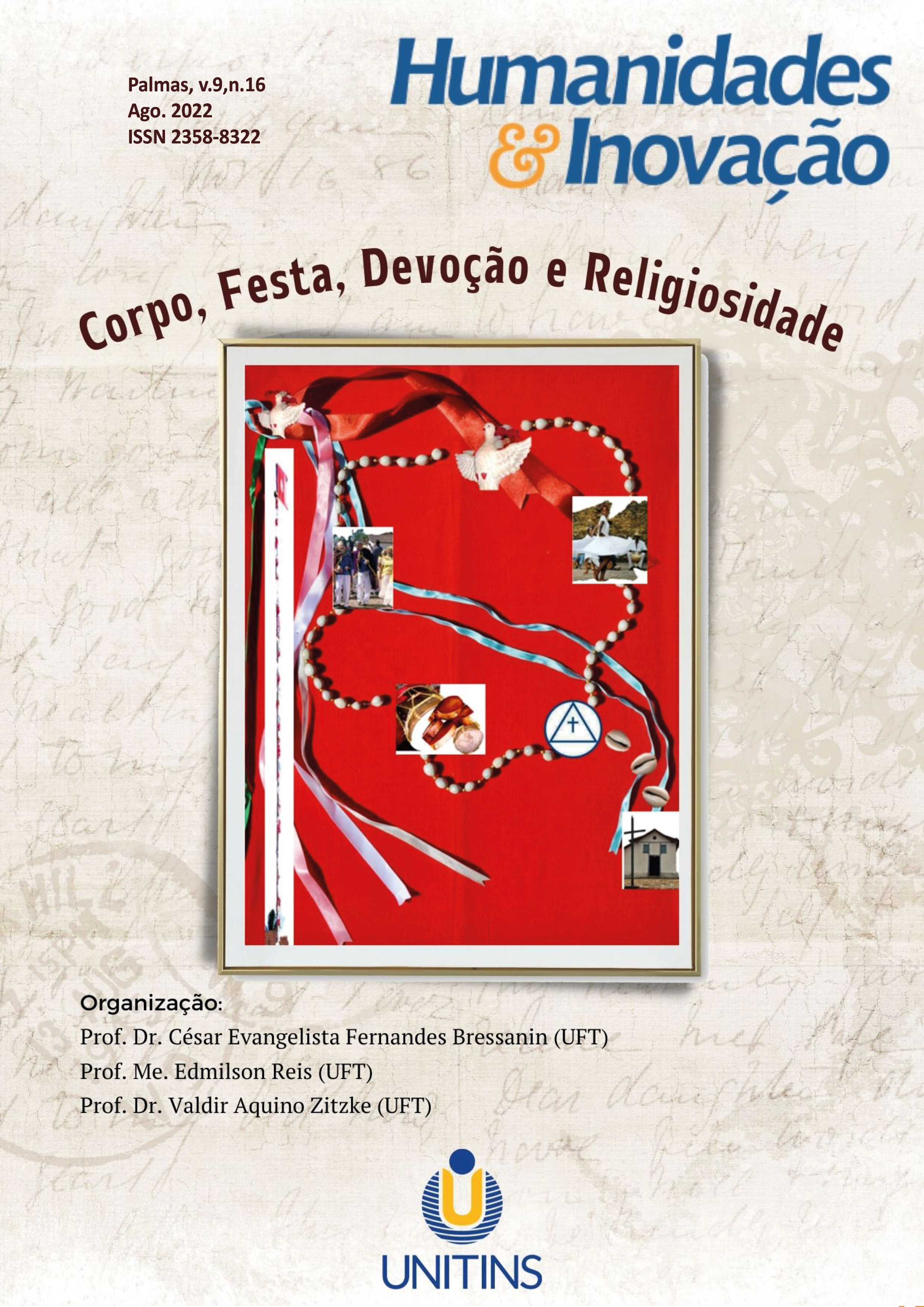CORPO, RELIGIOSIDADE, FESTA E TRADIÇÃO NO CONTEXTO DA CAVALHADA DE BRUMAL/MG
Abstract
This article seeks to answer the following question: which corporeities are expressed during a Catholic Cavalhada? It aims to discuss and analyze the religious vicissitudes that permeate the bodily instances during the Catholic celebration called cavalhada in a community in the interior of Minas Gerais. It establishes as a methodology the ethnographic case study. For this purpose, a tri-centennial community in the interior of Minas Gerais was selected as a research group. Among the different manifestations produced, the epistemological path is directed towards Cavalhada in honor of the local Patron Saint. With this, it was possible to ascertain different nuances, including a very unique way of the body to express itself and become the protagonist of the occasion. This protagonism is due to the integral peculiarity that men and horses assume for the development of the manifestation. Therefore, given this junction between men and horses, the metaphor of the centaur was used to describe and possible representative unfoldings that bodily actions assume.
References
BRANDÃO, Carlos Rodrigues.Os deuses do povo: um estudo sobre a religião popular. São Paulo: 2ª Ed. Brasiliense, 1986.
CAMARGO, Cândido Procópio Ferreira de. Católicos, protestantes, espíritas. Petrópolis: Editora Vozes, 1973.
CARDOSO DE OLIVEIRA, R. O trabalho do antropólogo. Brasília/ São Paulo: Paralelo Quinze/Editora da Unesp, 1996.
DA MATTA, Roberto. O ofício do etnólogo, ou como ter Anthropological Blues . In: NUNES, Edson Oliveira (Org.). A aventura sociológica: objetividade, paixão, improviso e método na pesquisa social. Rio de Janeiro: Zahar, 1978.
ELIADE, Mircea.O sagrado e o profano. São Paulo: Martins Fontes, 1992.
GONÇALVES, José Artur. “Cavalhadas na América Portuguesa: morfologia da festa”. In JANCSÒ, Istvan. KANTOR, Iris. Org. Festa: Cultura e sociabilidade na América Portuguesa. São Paulo: Edusp/Fapesp: 951-96, 2001.
GUARINELLO. Norberto Luiz."Festa, trabalho e cotidiano”. In JANCSÒ, Istvan. KANTOR, Iris. Org. Festa: Cultura e sociabilidade na América Portuguesa. São Paulo: Edusp/Fapesp: 969-975, 2001
MAUSS, Marcel. As técnicas corporais. In: Sociologia e Antropologia. São Paulo: EPU, EDUSP: 209-233, 1974.
MEYER, Marlyse. A propósito de Cavalhadas. In JANCSÒ, I. KANTOR, I. Org. Festa: Cultura e sociabilidade na América Portuguesa. São Paulo: Edusp/Fapesp: 227-247,2001.
QUEIROZ, Maria Isaura Pereira. O Catolicismo rústico no Brasil. In: O campesinato brasileiro: ensaios sobre civilização e grupos rústicos no Brasil. Petrópolis: Vozes: 72 – 99, 1973.
SILVA, G. J. S. Apresentação. In: Curato Nossa Senhora das Graças. Planejamento Pastoral 2011. Brumal: 2011.
TURA, M. L. R. A observação do cotidiano escolar. In: ZAGO, N.; CARVALHO, M. P. de, VILELA, R. A. T. (Org.). Itinerários da pesquisa: perspectivas qualitativas em sociologia da educação. Rio de Janeiro: Lamparina, 2011.
VELHO, Gilberto. Observando o familiar. In: NUNES, Edson Oliveira. (Org.). A aventura sociológica : objetividade, paixão, improviso e método na pesquisa social. Rio de
Janeiro: Zahar, 1978.
YIN, R. K. Estudo de caso: planejamento e métodos. Porto Alegre: Bookman, 2000.
ZALUAR, Alba. Milagre e castigo divino. In. Religião e Sociedade. n. 5, junho: 161-187, 1980
Copyright Notice
The submission of originals to this periodic implies in transference, by the authors, of the printed and digital copyrights/publishing rights. The copyrights for the published papers belong to the author, and the periodical owns the rights on its first publication. The authors will only be able to use the same results in other publications by a clear indication of this periodical as the one of its original publication. Due to our open access policy, it is allowed the free use of papers in the educational, scientific and non-commercial application, since the source is quoted (please, check the Creative Commons License on the footer area of this page).











